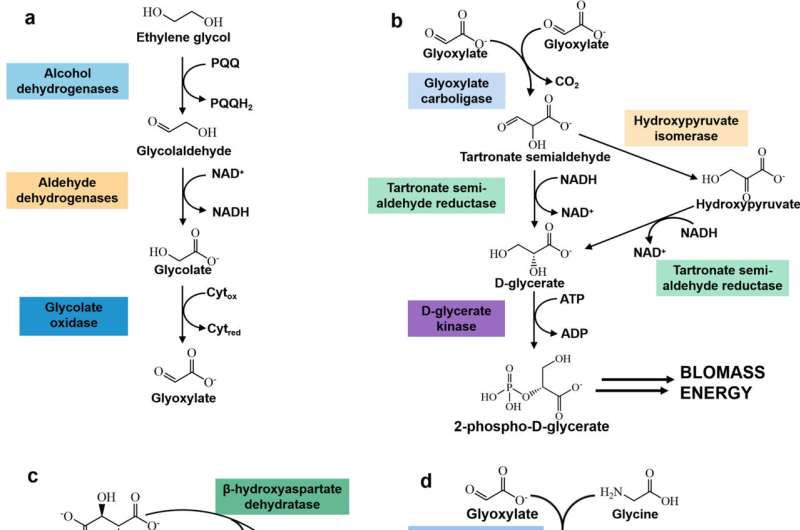Turning trash into treasure: Exploring biotic and abiotic methods for PET plastic upcycling

A paper in Eco-Environment & Health introduces innovative biotic and abiotic methods for recycling and upcycling polyethylene terephthalate (PET). The review delves into sustainable strategies that improve the processing and utility of PET waste.
This review introduces a transformative approach to PET waste management by integrating. The review has successfully developed methods to depolymerize PET into basic monomers such as terephthalic acid and ethylene glycol by utilizing a dual strategy that combines microbial and chemical catalysis.
These monomers can either be repurposed to create new PET with properties comparable to virgin materials or further converted into high-value products like muconic acid, vanillin, and adipic acid. This is achieved through innovative catalytic techniques, including enzymatic breakdown using genetically engineered microbes and advanced photo and electrocatalysis.
These methods not only enhance the recycling efficiency but also enable the upcycling of PET into diverse, economically valuable products. The review highlights significant reductions in energy usage and greenhouse gas emissions, making it a pivotal contribution to sustainable industrial practices.
Professor Zhiling Li, co-author of the review, states, "Our work not only improves PET recycling efficiency but also transforms waste into valuable products, thus contributing to a circular economy. The combined biotic and abiotic approaches open new pathways for environmental sustainability."
The implications of this review are profound, offering industries a way to turn PET waste into a resource. For example, upcycled PET can be used to produce textiles, packaging materials, and even chemicals for various applications, reducing reliance on virgin resources and minimizing waste.
More information: Jiaqi Yang et al, Towards carbon neutrality: Sustainable recycling and upcycling strategies and mechanisms for polyethylene terephthalate via biotic/abiotic pathways, Eco-Environment & Health (2024).
Provided by TranSpread




















